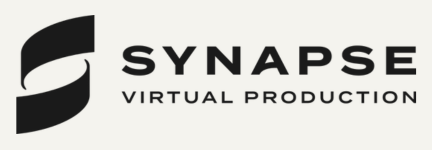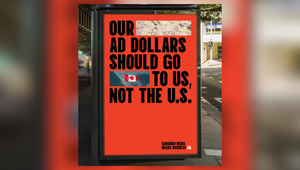
Inside the Uber Eats and Special Partnership Built on Trust, Humour and Gut Instinct

Trust, humour, and a shared love of chasing weird ideas – that’s the creative glue behind one of the most standout brands at Cannes Lions 2025.
Danielle Hawley, global head of brand and creative at Uber, and Dave Horton, partner and chief creative officer at Special US – fresh off a nine-Lion haul for their brilliantly absurd 'Football is For Food' and 'Brian Cox Goes to College' campaigns – joined LBB’s Addison Capper on stage at the Little Black Book & Friends Beach to break down the dynamics of a truly modern partnership between client and agency.
Over the course of the week, their teams had racked up an almighty nine Lions for their Uber Eats USA work. It quickly became clear that theirs isn’t just another client-agency relationship, but rather a creative partnership powered by trust, humour, and an unshakable belief in trusting the collective gut.
“It was immediately apparent, when we all started working together, how ambitious this team was,” said Dave. “My partner and I have freelanced for several years. We've worked at a lot of different agencies. We've worked with a lot of different clients, and when we first started working together, it was like a breath of fresh air – the ambition that they had, the willingness to chase down ideas that they loved. And I think that's continued as we've worked together.”
Their dynamic has fuelled a bold tone for Uber Eats – “irreverent”, “self-deprecating”, and, in my opinion, genuinely funny – and earned the team an impressive haul of two Gold, two Silver, and five Bronze Lions at this year’s awards. The duo broke down how their collective body of work has evolved from an initial idea intended for retail into a full-blown cultural conspiracy and an award-winning Super Bowl spot.
Addison’s line of questioning revealed how the ‘Football is For Food’ campaign was born from a data insight uncovered by the team at Uber. “They were looking back at some work we’ve done in previous seasons and uncovered this really interesting point,” said Dave. “When we ran an ad at the same commercial break as a QSR brand, such as McDonald's or Wendy's, it was significantly more effective. And from there, we talked a lot about why that would be, and came to the idea that cravings are kind of subliminal… And when you put those two things together, it really works.”
From there, it became about building a platform that could carry the joke and the brand’s offers throughout the NFL season. “How do you have a construct that can live, not get boring and isn't just a sponsorship of the NFL, but actually plays with the NFL and rewards fans and shows us that the brand is also a fan?” said Dave.
The conspiracy itself came about from a simple idea, but one that resonated across the team. Danielle noted the campaign’s broad appeal, explaining how it spoke to her, which she believed, in turn, meant it would speak to many others. “I'm an American, and I don't care at all about football, but I really, really enjoy ‘Game Day’ food,” she said. “I only go to baseball games to eat the pretzels. So, this campaign felt like it really had something in it for everybody… it almost gave you a new reason to watch the game.”
While the Super Bowl wasn’t part of the original plan, momentum made it inevitable. “The intention was always that the Super Bowl would be a spike and that it wouldn’t be connected to the campaigns that were running all season long,” said Danielle. “And then when we saw how much attention ‘Football Is For Food’ was getting, we thought, well, we really owe it to the fans of this campaign to find something that was kind of the finale… Caesars Superdome was the ultimate version of the conspiracy theory – it sealed the deal.”
As both Danielle and Dave illustrated over the course of the retrospective discussion, trust and creative rhythm is at the heart of this collaboration. “Respect and trust obviously plays a huge role,” said Dave. “It really was a back and forth… Georgie [Jeffreys, head of marketing at Uber for US and Canada] really is so good at balancing the business needs with the creative ambition. If she sees something that she loves, there’s kind of no wall that she won’t run through to make it happen.”

Danielle added, “There’s moments where everybody gets stuck, or there’s moments where feedback isn’t getting translated one way or the other. I work as that mediator and that translator. We’ve all been doing this a very long time, so there's often times where we're just like, ‘let's just get on a call and just riff’, even if it's just to brighten our moods and to realise that there's other directions or other jokes that we can find.”
It’s a partnership that goes beyond process, reshaping what’s inevitably possible between client and agency. As Danielle reflects, “I've learned more from my creative partners on the Special side – Tom and Jules and Matt and Dave and and the team – than anybody else. There's always a kismet between creatives, and when you have that camaraderie, shorthand and ability to make each other better constantly – it’s rare, and I don't take it for granted. And I don't think Dave does.”
Read more insights from Cannes 2025 LBB Friends Beach here.















